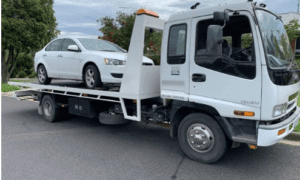Cloud migration is not just a technical initiative — it’s a business transformation. Yet many organisations rush into the cloud without fully understanding whether their systems, teams, and processes are truly prepared for the change. That’s where a Cloud Migration Readiness Assessment (CMRA) comes in.
This critical evaluation helps businesses identify gaps, mitigate risks, and lay the foundation for a successful and cost-effective migration strategy.
What Is a Cloud Migration Readiness Assessment?
A Cloud Migration Readiness Assessment is a structured process that evaluates an organisation’s technical infrastructure, operational capabilities, security posture, and business objectives to determine how prepared it is for a move to the cloud.
Rather than jumping directly into migration, this assessment provides a clear picture of:
- What needs to be migrated
- Which migration strategy is best suited
- Potential risks and bottlenecks
- The necessary resources and timelines
Key Components of a Readiness Assessment
1. Technical Readiness
- Current application architecture (monolithic, modular, microservices)
- System interdependencies and legacy components
- Hardware usage, load balancing, and resource utilisation
- Application performance and scalability limitations
2. Operational Readiness
- DevOps maturity and automation capabilities
- CI/CD pipelines and deployment processes
- Monitoring, alerting, and backup policies
- IT service management standards (SLA, OLA)
3. Security & Compliance Readiness
- Data protection practices and access controls
- Regulatory requirements (e.g. GDPR, HIPAA, SOC 2)
- Identity and access management (IAM)
- Incident response and disaster recovery policies
4. Business and Organisational Readiness
- Business goals for cloud adoption (speed, flexibility, innovation, cost savings)
- Change management and team training plans
- ROI expectations and total cost of ownership (TCO)
- Executive sponsorship and stakeholder alignment
Common Outcomes of a Readiness Assessment
After completing a CMRA, businesses typically receive:
- A risk and gap analysis of current systems and processes
- A recommendation on the optimal migration strategy (rehost, replatform, refactor, replace)
- A cloud migration roadmap, including timelines and milestones
- Cost estimates and projected benefits of cloud adoption
- A prioritised list of workloads for migration
Why It Matters
Without a readiness assessment, cloud migration efforts are far more likely to:
- Run over budget and behind schedule
- Cause unplanned downtime or data loss
- Fail to meet performance or compliance requirements
- Face internal resistance due to poor planning and communication
With a readiness assessment, companies gain:
- A realistic understanding of their current state
- Greater confidence in decision-making
- Improved collaboration across teams
- A smoother, more predictable migration process
Tools and Frameworks Often Used
- AWS Cloud Adoption Readiness Tool (CART)
- Microsoft Azure Cloud Adoption Framework
- Google Cloud Migrate Assessment
- Custom assessment frameworks by cloud consulting partners
These tools may include automated scans, interviews with stakeholders, architecture reviews, and infrastructure audits.
Best Practices
- Start with a full inventory of applications, data, and dependencies
- Involve both IT and business teams early in the process
- Prioritise quick wins, such as migrating non-critical workloads first
- Ensure robust security planning from the beginning
- Document everything to align expectations and track progress
Conclusion
A Cloud Migration Readiness Assessment isn’t a luxury — it’s a necessity for any organisation planning to move to the cloud. By assessing where you stand today, you can make smarter choices about where to go next, how to get there, and how to minimise risk along the way.
The cloud offers speed, agility, and innovation — but only to those who are ready for it.



































